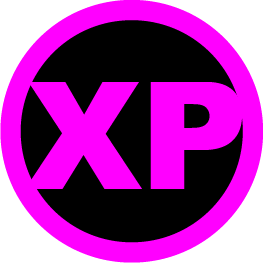-
Content Count
93 -
Joined
-
Last visited
-
Days Won
11
Content Type
Profiles
Forums
Blogs
Forum & Tracker Requests
Downloads
Gallery
Store
Calendar
Everything posted by seedhartha
-
Published version 3.1 of the add-on with import & export of original normals, support for saber meshes and optimized export.
- 121 replies
-
- 1
-

-
Number of things, including swapping some function pointers and appending additional data to mesh headers. This has everything to do with model format and almost nothing to do with its contents. i.e. you cannot target K1 supermodels from K2 models without some modification of the bone structure. This is by design, and I have no intention to automate these modifications at the moment. Smoothing groups is a 3ds Max concept to influence vertex normal calculation. MDL knows nothing of smoothing groups and so does Odyssey engine. What I meant by lack of smoothing groups is that in version 3.0 of KotorBlender, original normals are not preserved, and shading might get screwed. However, I have since implemented import & export of original normals and will soon release an update.
- 121 replies
-
- 1
-

-
Nope, you just check or uncheck "Export for TSL". No need for MDLedit at all.
- 121 replies
-
- 1
-

-
Just tested this and yeah - we can import and export original normals, no problem.
- 121 replies
-
- 1
-

-
For those interested, version 3.0 of KotorBlender is out. ASCII MDL / PTH workflow has been dropped in favor of binary importer & exporter. Binary MDL support is mostly on par with MDLops/MDLedit, except it lacks smoothing groups and cannot export saber meshes. I will fix these as I go. Other plans include streamlining the editing process, e.g. one-click lightmap baking and working with multi-material objects, armature animation export, advanced shader node setups, etc. Also, an interesting discovery I made about the MDL format - both MDLops and MDLedit expect per-vertex "tangent space" data to have the following layout: Bx By Bz Tx Ty Tz Nx Ny Nz, where B is a bitangent, T is a tangent and N is a normal. However, my experiments show that "tangent space" is actually a transposed TBN matrix, which makes a lot more sense from the engine standpoint: Tx Bx Nx Ty By Ny Tz Bz Nz.
- 121 replies
-
- 2
-

-
Hey, guys. Just wanted to give you a heads up that I'm in the middle of updating the add-on, enabling import and export of binary models based on MDLedit. I noticed that @Arson Hole is using the master version from GitHub. This one is not being properly tested and could be unstable. Please use version 2.1.0 from this site instead, and make sure to put all addon files under a folder named kotorblender, as @Hunters Run just said.
- 121 replies
-
- 2
-

-

QUESTION different texture Instances possible?
seedhartha replied to Jorak Uln's topic in General Kotor/TSL Modding
Objects using the same texture are merged in that particular area (and it makes total sense from performance standpoint). You'd have to manually separate geometry in Blender or NWmax.- 1 reply
-
- texture variety
- help
-
(and 1 more)
Tagged with:
-
That is a known issue - same goes for pre-2.8 version of the add-on. Apparently, it has something to do with keyframe interpolation. Exported animations and imported armatures work OK though, so it's not exactly high on my todo list. I'm not aware of any hard limitations of KotorBlender, with regards to creating new characters. It may not have as many utilities as NWmax, it lacks tutorials, but you can certainly model, texture and rig new characters using KB.
- 121 replies
-
- 2
-

-
That is the most voted option so far, followed by feature-parity with vanilla (i.e. no alterations, until it is finished, haha). I'm surprised more people hadn't vote for co-op multiplayer. Starting that poll was a good idea - I'll make sure to adjust project priorities accordingly. Regarding real-time combat: it is going to be tricky due to how KotOR systems (e.g. d20 and animations) are orchestrated for turn-based combat: feats, Force Powers, damage calculation - everything is tied to these 3-second combat rounds. We're looking at some major balance-breaking changes, unless we find a good enough compromise (any ideas?).
-
View File N/A N/A Submitter seedhartha Submitted 04/22/2021 Category Modding Tools
-
Made a poll on /r/kotor regarding the future on reone. Feel free to chime in.
-

Porting some lightsaber animations from Kotor2 into Kotor1?
seedhartha replied to JaneAus10's topic in Mod Requests
It's doable in KotorBlender (I've tested editing supermodel animations not long ago). You'd have to determine the frame range of both animations, and manually copy position and orientation keyframes from one model into another, probably one object at a time (I don't believe this process is currently automated). Altough, if K1 and K2 models do indeed have different bone structures, then you're out of luck with this method. -
Thanks! That was to be expected, I suppose, since I do all my development and testing using a vanilla English version of KotOR. I've added this issue to the roadmap - will make sure to look into it.
-
To give you an idea, here's what I managed so far. This really isn't the best example, and @lachjames got a lot further than that. These models were both trained for 10,000 iterations (around 1 hour of fine-tuning, after which the validation loss plateaus) using a method I described on my wiki page. Just to make it perfectly clear, this is not the project I'm actively working on, but rather a discovery I wanted to share, and a guide on how to get similar results. atton_as_canderous.mp3 bastila_as_kreia.mp3
-
Hello, I have recently discovered this video, which got me interested in a field of speech synthesis. I have researched this subject and, as it turns out, today technology is quite capable of producing semi-realistic speech, which, I believe, is more than good enough for modders to do voice-overs. I was able to replicate results shown in this video, and while at it, made some Python scripts and sort of a guide on how to train a model on Bastila's (or any other character's) voice. Here's the link: https://github.com/seedhartha/reone/wiki/TTS-Research Training an AI model is a tedious and error-prone process, but this step can be avoided altogether if you use a pre-trained model. I'm not sure I want to make my models public due to legal concerns, but contact me if you're interested in the topic (i.e. you need a voice-over for your mod), and we can work something out.
-
Status update: I'm releasing version 2.0.0, which is the first non-beta version of the updated add-on. I've tested it on quite a few models, doing modelling, texturing, rigging, animation, etc. I think KotorBlender is now on par with KotorMax in terms of functionality: it works equally well for editing (and creating) character and area models, and I'm quite happy with the result. Here's the excerpt from the release changelog: Rewritten handling of materials and lights (Eevee) Made materials configurable from Object Properties Implemented import & export of LYT files Implemented import & export of ASCII PTH files (reone-tools) Implemented armature creation (no animations yet) Fixed MDLedit compatibility issues Removed NWN-specific functionality Disabled minimap rendering (until later) Code cleanup and refactoring in accordance with Blender and Python code styles
- 121 replies
-
- 3
-

-
View File reone toolkit toolkit is a GUI application that can be used to preview, extract, edit and create KotOR and TSL resources. Part of reone engine project. ## Features Extract BIF, RIM and ERF archives Create RIM, ERF or MOD archive from directory Preview and export almost every resource type, including 3D models, images and audio files Export TPC as TGA / TXI Export encoded WAV as regular WAV / MP3 Visually edit 2DA, GFF, TLK, LIP, SSF, NCS and plaintext files Decompile NCS to NSS-like pseudocode Compose LIP files from text and audio files https://github.com/seedhartha/reone/wiki/Tooling Submitter seedhartha Submitted 04/01/2021 Category Modding Tools
- 5 replies
-
- gui-application
- media-preview
-
(and 2 more)
Tagged with:
-
Version 1.0 beta1
677 downloads
toolkit is a GUI application that can be used to preview, extract, edit and create KotOR and TSL resources. Part of reone engine project. ## Features Extract BIF, RIM and ERF archives Create RIM, ERF or MOD archive from directory Preview and export almost every resource type, including 3D models, images and audio files Export TPC as TGA / TXI Export encoded WAV as regular WAV / MP3 Visually edit 2DA, GFF, TLK, LIP, SSF, NCS and plaintext files Decompile NCS to NSS-like pseudocode Compose LIP files from text and audio files https://github.com/seedhartha/reone/wiki/Tooling- 2 reviews
-
- 9
-

-

-

-
- editing-tools
- media-preview
-
(and 2 more)
Tagged with:
-
Status update: I've done a couple of beta releases (now at beta 4), where I've improved compatibility with MDLedit and added support for editing PTH files. For those interested in baking lightmaps or editing PTH files in KotorBlender, I've listed the necessary steps in the description.
- 121 replies
-
- 2
-

-

-
Fix is in the repository (mesh removal made redundant after upgrade).
- 121 replies
-
- 1
-

-
View File KotorBlender for Blender 3.6 and 4.2 Blender addon for working with KotOR assets. Features: Import & export MDL models, including animations and walkmeshes Import & export LYT files Import & export PTH files Lightmap texture baking Area minimap rendering For installation and usage guides, see README in the GitHub repository. Submitter seedhartha Submitted 03/18/2021 Category Modding Tools
- 121 replies
-
- 1
-

-
Version 4.0.3
3,558 downloads
Blender addon for working with KotOR assets. Features: Import & export MDL models, including animations and walkmeshes Import & export LYT files Import & export PTH files Lightmap texture baking Area minimap rendering For installation and usage guides, see README in the GitHub repository.- 4 reviews
-
- 16
-

-

-

-
- blender-addon
- modelling
-
(and 1 more)
Tagged with:
-
What are the limitations, I'm curious? Things like maximum number of lights and bones are not going to be an issue any longer. New graphical features could be added mid-difficulty, as well as new game mechanics, given enough interest from modders/developers.
-
Oh, I see. This has more to do with the save system, than with modules. Save system is actually one of those things that I'm willing to completely redesign, due to how hard it would be to make it 100%-compatible with vanilla. If "real-time" reloading of templates would make modders' life easier, then this is the way we could go, no problem. I hear you - recreating something that already works and NOT improving upon it does sound wrong. I'm coming from the "minimum viable product" point of view. Getting the equivalent of vanilla out with slightly better graphics and QoL improvements beats releasing a shiny but incomplete engine, in my book. I will of course consider adding advanced graphical features - perhaps when the engine is a little more mature? That's a good point. I will keep this vanilla/ehanced mode toggle in mind and develop accordingly.



